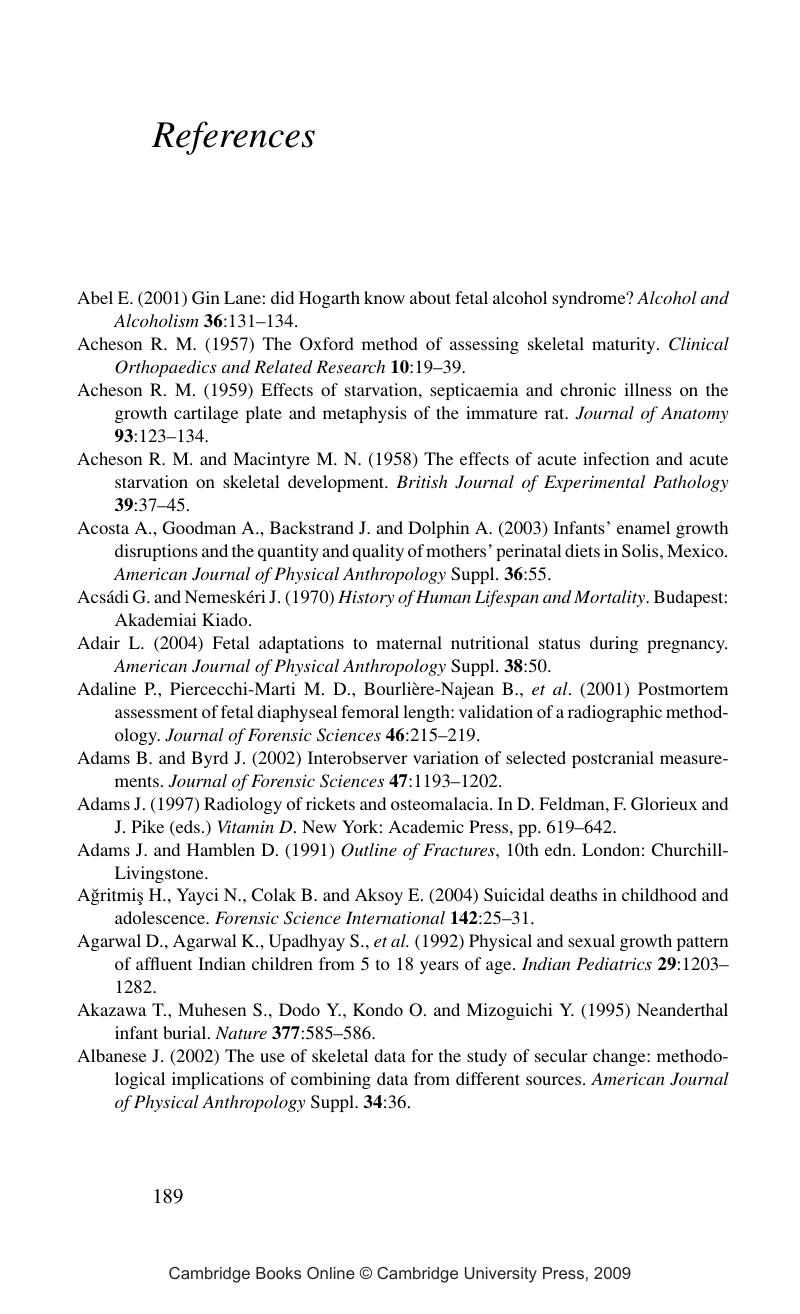Book contents
- Frontmatter
- Contents
- Acknowledgements
- 1 The bioarchaeology of children
- 2 Fragile bones and shallow graves
- 3 Age, sex and ancestry
- 4 Growth and development
- 5 Difficult births, precarious lives
- 6 Little waifs: weaning and dietary stress
- 7 Non-adult skeletal pathology
- 8 Trauma in the child
- 9 Future directions
- References
- Index
- References
References
Published online by Cambridge University Press: 16 September 2009
- Frontmatter
- Contents
- Acknowledgements
- 1 The bioarchaeology of children
- 2 Fragile bones and shallow graves
- 3 Age, sex and ancestry
- 4 Growth and development
- 5 Difficult births, precarious lives
- 6 Little waifs: weaning and dietary stress
- 7 Non-adult skeletal pathology
- 8 Trauma in the child
- 9 Future directions
- References
- Index
- References
Summary

- Type
- Chapter
- Information
- The Bioarchaeology of ChildrenPerspectives from Biological and Forensic Anthropology, pp. 189 - 247Publisher: Cambridge University PressPrint publication year: 2006



